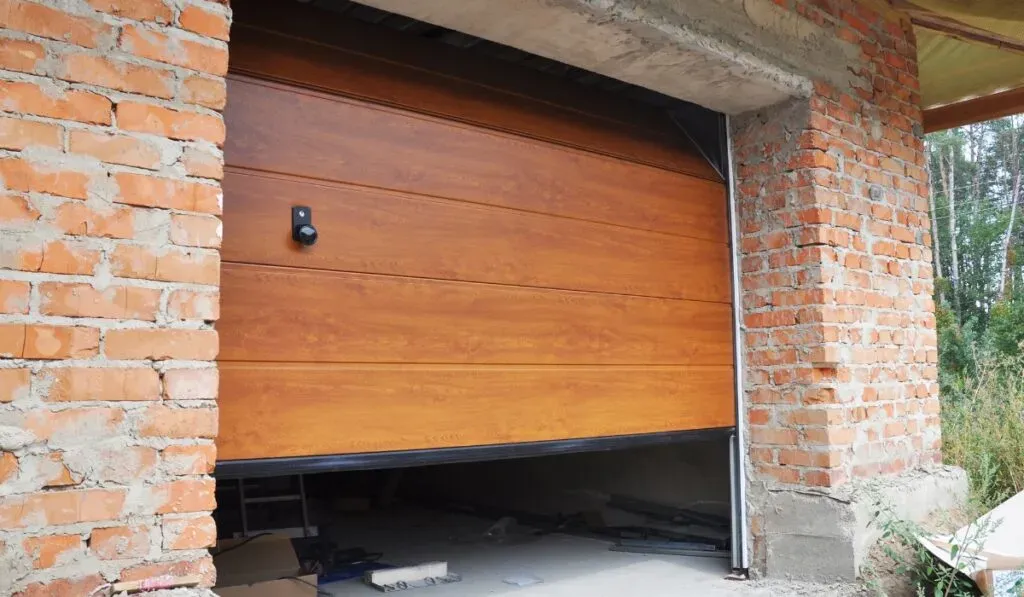
Understanding the garage door balance test safety reversal is essential for safe operation, and 24/7 Garage Door Repair provides a step-by-step guide covering the manual release and 2×4 safety reversal test. This process involves checking the balance test, performing the safety reversal system test according to UL 325, and making necessary adjustments while maintaining call-a-pro boundaries.
Why Garage Door Safety Tests Are Crucial
Garage doors keep your home or business secure. But they can also be dangerous if not cared for. Doing regular garage door safety tests helps stop accidents before they happen. These tests make sure all the garage door safety features work like they should.
Regular checks help with garage door injury prevention. They make residential garage door safety better and protect pets and kids from harm. Whether it’s a commercial garage door or one with an automatic garage door opener, testing safety features is key. It helps prevent accidents that might cause harm or damage.
Importance of Properly Functioning Garage Door Safety Features
Good garage doors have safety parts that protect people and things around them:
- Garage Door Reversal Mechanism: This flips the door’s direction if it hits something while closing.
- Safety Reversal System: Stops or backs up the door when it senses a person, pet, or object.
- Garage Door Auto-Reverse: Prevents serious damage by reversing the door when blocked.
- Garage Door Sensor Test: Checks sensors often to make sure they spot anything in the way.
These parts work as a team to stop problems. Regular testing keeps kids and pets safe. It also cuts down on injuries and damage from broken doors.
Legal Requirements for Garage Door Openers (UL 325 Standard)
The UL 325 safety standard sets rules for garage doors. These rules protect people using them every day. All new garage door openers must follow this federal law.
Some main points include:
- Automatic reversal systems must be on every new setup.
- Sensors need to be put in places where they catch obstacles well.
Knowing about the UL 325 garage door standard helps owners pick safe products. It also guides proper installation and fixes to meet legal demands.
Potential Dangers of a Malfunctioning Garage Door
Broken or poorly working garage doors can cause trouble fast:
- Serious Injury Hazard: Doors may slam shut suddenly, risking severe injuries or worse.
- Prevent Entrapment Risks: Without working sensors or reversal systems, kids and pets might get stuck under the closing door.
Skipping regular balance tests or ignoring safety reversal checks makes these risks worse. Keeping up with these checks helps avoid dangerous accidents at homes and businesses.
Putting effort into garage door safety tests and maintenance protects everyone nearby. It stops harm before it starts and keeps your property safer all around.
Preparing for the Garage Door Safety Tests
Before you start the garage door balance test or safety reversal test, get ready first. A quick monthly garage door safety check helps stop accidents and keeps things working right. Use a garage door maintenance checklist to cover all the basics like looking at springs, cables, rollers, and sensors.
Try these easy inspection tips:
- Look for any damage or wear on moving parts.
- Listen for weird noises when the door moves.
- Make sure the door opens and closes smoothly and straight.
- Read your manual to know the garage door safety protocols you should follow.
As a homeowner, you need to keep your garage door safe. Checking it often finds problems before they get worse. Spending a few minutes each month can save money and keep your family safe.
Gathering the Necessary Tools and Equipment
Get your tools ready before testing with the manual release balance test or 2×4 safety reversal test:
- The garage door manual release handle (usually red) to unlock the opener.
- A strong 2×4 wood piece about 1.5 inches thick by 3.5 inches wide for testing how well the door reverses.
- A printable log sheet template to write down your results during tests.
These tools help you do a simple DIY check that follows rules like UL 325. Having them handy saves time and helps avoid mistakes in your DIY garage door safety test.
Ensuring a Clean and Obstruction-Free Work Area
Start by clearing stuff around your garage door before testing. Take away anything that could block the door or make you trip. This stops accidents during tests or daily use.
Here’s what to do:
- Sweep dirt from tracks, floor, and sensor areas.
- Check near photo-eye sensors; dirt can block signals and cause errors.
- Do regular garage door obstruction sensor cleaning by wiping lenses with a soft cloth.
A clean area makes tests more accurate. It also keeps parts working longer by stopping hidden blocks from causing strain.
Understanding the Role of Photo-Eye Sensors
Photo-eye sensors stop your garage door if something is in the way. They send an invisible beam called a “safety edge” across the doorway.
You should know this:
- The sensors must be lined up right; if not, they won’t spot objects.
- Check mounts often; adjust so beams point straight at each other with no blocks (garage door sensor beam alignment).
- Some doors have extra safety edge sensors that sense pressure on edges to avoid pinches.
Keeping photoelectric safety sensors clear meets national rules like UL 325 and protects everyone daily.
How to Perform the Garage Door Balance Test
Doing a garage door balance test helps keep your door working smooth and safe. This test checks if the springs and parts do their job right. It stops too much wear on the opener and cuts down risks of accidents.
Here’s what you need to do:
- Check your door’s mechanical parts.
- See how the springs hold the door.
- Notice any signs of garage door imbalance.
Step 1: Manually Disconnect the Garage Door Opener
First, pull the garage door manual release cord or lever. This is your emergency release mechanism. It lets you free the door from the opener so you can move it by hand. Find this garage door mechanical release before you start. Be careful—don’t let the door drop suddenly.
- Locate manual release.
- Pull to disconnect opener.
- Handle carefully to avoid sudden moves.
Step 2: Manually Open the Door Halfway
Lift the garage door up until it is about halfway open. The lift should feel smooth with little resistance. This means your manual garage door operation is good. If it feels heavy or jerky, that could mean a problem with spring tension or mechanical door balance.
- Lift slowly to half open.
- Feel for smooth motion.
- Watch for heavy pulls or jerks.
Step 3: Observe the Door’s Movement and Balance
Now let go of the door gently when it’s halfway up. If your garage door is well balanced, it will stay still without moving up or down fast. This shows your garage door torsion springs work well and keep good tension.
If it moves up or falls quickly, there is an imbalance that needs fixing before you use your automatic opener again.
- Door should stay put.
- No quick drops or rises.
- Indicates safe and proper function.
Interpreting the Results: Identifying Imbalance Issues
Here are signs your garage door might be out of balance:
- The door won’t stay open halfway.
- Lifting feels really heavy.
- The door drops suddenly by itself.
- The opener uses too much force.
These signs point to bad garage door spring balance or worn springs. If things seem out of adjustment, parts may wear faster and cause unsafe use.
If you spot these problems during your manual release balance test, call a pro for help. Don’t try fixing springs yourself—it can be dangerous. Getting it right keeps your springs and opener working longer and safer.
How to Perform the Garage Door Safety Reversal Test
You need to check your garage door’s safety reversal system now and then. It helps stop accidents and damage. This test shows if the door flips back when it hits something. That’s a key rule in the UL 325 safety standards.
Step 1: Place a 2×4 Piece of Wood in the Door’s Path
Put a strong 2×4 board flat on the floor where the door shuts. This acts like something blocking the garage door obstruction sensor or safety edge sensors. The “2×4 safety reversal test” is common to check if your automatic garage door opener safety reacts right when blocked.
Step 2: Initiate Closing of the Garage Door
Press your remote or wall button to close the door. It should start moving down toward the floor and meet the 2×4 board you put there. This tests if your garage door auto-reverse turns on when it needs to.
Step 3: Observe Door Reaction and Reversal
Watch closely as soon as the bottom hits or feels pressure from the wood:
- The door must stop fast.
- Then, it should reverse safely and open again.
This proves if reverse sensitivity works in photoelectric safety sensors or mechanical edges.
Troubleshooting Common Issues with Garage Door Balance and Safety Reversal Tests

Doing regular garage door balance tests and safety checks helps keep things safe. These simple operational tests catch problems early. That way, you avoid big repairs or accidents later. If your garage door fails a test, it means it needs some adjustment or a pro’s help.
Door Fails the Balance Test: Causes and Solutions
When you lift your garage door halfway and let go, it should stay put. If it falls fast or moves up by itself, the balance is off. This can make the automatic opener use too much force. That can damage parts or cause injury.
Here are some common causes when the door fails balance:
- Torsion springs worn or broken: These springs hold the door’s weight and may require garage door spring replacement. If they’re weak, the door won’t balance right.
- Wrong spring tension: Too tight or too loose springs mess up the mechanical door balance.
- Cables or drums damaged: These guide the door smoothly and often require professional garage door cable repair service. If worn, they affect movement.
- Tracks bent or loose: Bad tracks add resistance and throw off balance.
If your door fails this test, don’t try to fix it yourself! Garage door repair safety matters because springs hold strong energy that can hurt you. Instead:
- Call a pro for a safety check.
- Have them inspect torsion springs and adjust spring tension.
- Replace any worn cables or broken parts.
Signs your door is off-balance include noisy operation, jerky moves, and trouble opening by hand. These warnings mean act fast.
Door Fails the Safety Reversal Test: Troubleshooting Steps
The safety reversal system stops and reverses the closing door if something blocks it. The 2×4 safety reversal test uses a piece of wood under the closing door to check this feature.
If your automatic garage door opener does not stop and reverse during this test:
- The force may be set too high, stopping auto-reverse from kicking in.
- Photoelectric sensors (photo-eye sensors) might be out of alignment and need garage door sensor repair in Newport Beach.
- Wires connecting sensors to opener might be loose or damaged.
To fix these problems:
- Lower force limits following your opener’s instructions using its control panel.
- Clean sensor lenses carefully with a soft cloth to clear dirt.
- Adjust sensor alignment so their lights face each other directly without blockages.
If these fixes don’t work right away, call a trained technician. Broken safety systems can cause serious harm.
Problems with Photo-Eye Sensors: Alignment and Cleaning
Photoelectric safety sensors spot objects by sending infrared beams between two units near floor level on each side of the doorway.
Common sensor troubles are:
- Misaligned sensors causing false beam breaks
- Dirty lenses making sensors less sensitive
- Damaged wiring cutting power
To keep sensors working well:
- Do regular garage door sensor tests by checking their indicator lights — both should glow steady when aligned.
- Clean lenses every month with mild soap and a soft cloth; don’t use harsh chemicals that might scratch them.
- Move brackets slowly until both LED lights turn solid green, showing a clear line-of-sight.
Good photo-eye sensors help catch obstructions as part of your garage door maintenance checklist recommended by UL 325 standards.
When to Call a Professional Garage Door Technician
If your garage door acts up badly, you should contact a professional right away. A garage door repair professional can fix tough problems like broken springs or cables that you shouldn’t touch. Don’t try to fix heavy parts or electric stuff by yourself—it can be dangerous.
Call for a garage door service call if the door looks off balance, makes weird sounds, or fails the safety reversal test. These issues need a pro’s help to stop accidents and costly damage. Booking a scheduled appointment with a garage door technician means you get proper checks and solid repairs.
Here’s when to call:
- Door feels unbalanced after testing
- Strange noises during operation
- Door doesn’t reverse when it should
- Broken springs or cables
- Problems with the opener
Determining the Limits of DIY Adjustments
You can do a DIY garage door safety test to spot small troubles early on. But if you are unsure about any part—like spring tension or opener force—stop right there. Trying something without knowing can make things worse or cause injury.
If your tests show the door stays unbalanced or safety parts don’t work well, it’s better to replace parts than keep fixing yourself. Always put safety first and know when your DIY skills are not enough.
Remember:
- Use the DIY garage door safety test carefully
- Stop if you feel unsure at any step
- Replace parts when problems keep showing
- Prevent accidents by calling in pros when needed
Importance of Proper Force Setting Adjustments
Garage door force adjustment matters a lot for safety. The door needs enough force to close smoothly but not so much that it hurts someone or breaks things if blocked.
The garage door opener force adjustment should stop excessive pressure while still closing right every time. If during testing the force feels too strong and the door won’t reverse easily, get it fixed fast by a pro.
Key points:
- Force must be balanced—not too weak, not too strong
- Closing force needs fine-tuning for safe operation
- Excessive force stops proper reversing and is dangerous
- Have a qualified technician adjust force settings
Scheduling a Garage Door Safety Inspection
Regular checks keep your garage door working safely longer through a proper garage door maintenance schedule in Newport Beach. Following a good garage door maintenance schedule helps catch wear before it causes trouble.
Use a printable safety log sheet at home or with professionals. It helps track balance tests and reversal checks regularly. Keeping these records supports quick fixes and shows you follow rules like UL 325 for automatic doors.
Plan an annual garage door safety inspection routine with experts to protect your family and keep gear lasting longer.
Remember:
- Schedule regular inspections yearly
- Stick to a maintenance routine
- Use printable logs for tracking
- Safety inspections prevent bigger issues
